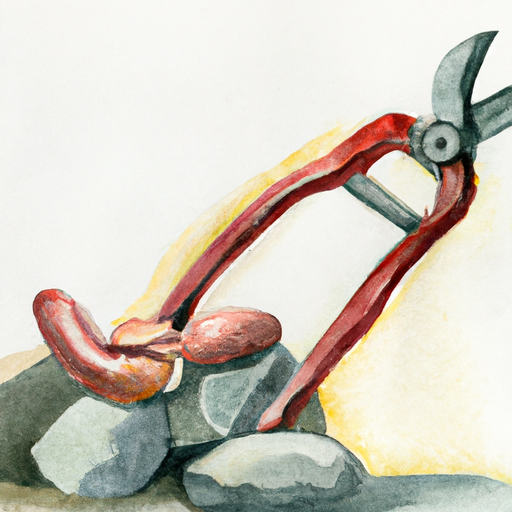- Your cart is empty
- Continue Shopping
Comprehensive Guide to Kidney Stones: Discovering the Causes, Symptoms, Diagnosis, Treatment, and Prevention

Kidney stones can be an incredibly painful and debilitating condition, affecting millions of people worldwide. These small, hard mineral deposits can form in the kidneys and cause a variety of symptoms, ranging from intense pain and discomfort to urinary problems and even kidney damage. In this article, we will explore the causes, symptoms, and diagnosis of kidney stones, as well as the various treatment options available. Additionally, we will discuss lifestyle changes and dietary recommendations that can help prevent the formation of kidney stones. Whether you are currently dealing with kidney stones or simply looking to educate yourself on this common condition, this article will provide you with valuable information to better understand, treat, and prevent kidney stones.
You can find out more about this substance here: https://bbgate.com/tags/jwh-018/.
1. “Understanding Kidney Stones: Causes, Symptoms, and Diagnosis”
Kidney stones, also known as renal calculi, are hard deposits that form in the kidneys. They can range in size from as small as a grain of sand to as large as a golf ball. Kidney stones are a common condition that affects millions of people worldwide, and their prevalence is increasing.
Understanding the causes of kidney stones is essential in preventing their formation. The most common type of kidney stone is composed of calcium oxalate, which forms when there is an excess of calcium and oxalate in the urine. Other types of kidney stones include uric acid stones, struvite stones (formed due to urinary tract infections), and cystine stones (a rare genetic disorder).
Several factors contribute to the development of kidney stones. Dehydration, inadequate fluid intake, and certain dietary habits, such as a high intake of salt, animal protein, or oxalate-rich foods like spinach and rhubarb, can increase the risk of stone formation. Additionally, certain medical conditions, such as gout, urinary tract infections, and metabolic disorders like hyperparathyroidism, can also increase the likelihood of developing kidney stones.
The symptoms of kidney stones can vary depending on their size and location. Smaller stones may pass through the urinary tract without causing noticeable symptoms. However, larger stones can cause excruciating pain, known as renal colic, which typically starts in the back or side and radiates to the lower abdomen and groin. Other symptoms may include blood in the urine (hematuria), frequent urination, cloudy or foul-smelling urine, and a persistent urge to urinate.
Diagnosing kidney stones usually involves a combination of medical history, physical examination, and diagnostic tests. The doctor may ask about the patient’s symptoms, dietary habits, and medical history to identify potential risk factors. A physical examination may be performed to assess any tenderness or swelling in the abdomen or back. To confirm the presence of kidney stones and determine their size and location, imaging tests such as an abdominal X-ray, ultrasound, or computed tom
2. “Effective Treatment Options for Kidney Stones: Medications, Procedures, and Home Remedies”
Kidney stones, also known as renal calculi, can cause excruciating pain and discomfort. If you’ve ever experienced the agony of passing a kidney stone, you know how crucial it is to find effective treatment options. Fortunately, advancements in medical science have provided a range of treatments for kidney stones, including medications, procedures, and even some home remedies.
When it comes to treating kidney stones, the approach depends on various factors such as the size, location, and composition of the stone, as well as the severity of the symptoms. Your healthcare provider will carefully evaluate these factors before determining the most suitable treatment plan for you.
1. Medications:
In some cases, small kidney stones may pass on their own with the help of pain relievers and medications. Nonsteroidal anti-inflammatory drugs (NSAIDs) such as ibuprofen can help alleviate pain and reduce inflammation. Additionally, your doctor may prescribe alpha blockers, which relax the muscles in the ureter, facilitating the passage of the stone.
2. Procedures:
a) Extracorporeal Shock Wave Lithotripsy (ESWL):
ESWL is a commonly used non-invasive procedure for treating kidney stones. It involves the use of shock waves to break the stone into smaller fragments, making them easier to pass naturally. This treatment option is most effective for stones smaller than 2 centimeters in diameter.
b) Ureteroscopy:
For stones located in the lower urinary tract or ureter, a ureteroscopy may be recommended. This procedure involves the insertion of a thin tube with a camera (ureteroscope) into the ureter to locate and remove the stone. In some cases, laser technology may be used to break the stone into smaller pieces for easier removal.
c) Percutaneous Nephrolithotomy (PCNL):
PCNL is typically performed for large kidney stones or when other treatments have failed. It involves making a small incision in the back to access the kidney directly. Using specialized instruments, the surgeon removes or breaks down the stone,
3. “Preventing Kidney Stones: Lifestyle Changes and Dietary Recommendations”
Preventing Kidney Stones: Lifestyle Changes and Dietary Recommendations
Kidney stones can be an extremely painful condition to deal with. The good news is that there are certain lifestyle changes and dietary recommendations that can help prevent the formation of these stones and minimize the risk of recurrence. By making a few adjustments to your daily routine and dietary habits, you can significantly reduce the chances of developing kidney stones.
1. Stay Hydrated: One of the most crucial preventive measures for kidney stones is to maintain proper hydration. Drinking an adequate amount of water throughout the day helps dilute the urine, preventing the minerals and salts from crystallizing and forming stones. Aim to drink at least 8-10 glasses of water or around 2-3 liters per day. This recommendation may vary depending on individual factors such as climate, physical activity, and medical conditions, so consult with your healthcare provider to determine the right amount for you.
2. Limit Sodium Intake: Excessive consumption of sodium can increase the risk of kidney stone formation. High levels of sodium in the body lead to increased calcium excretion through urine, which can contribute to stone formation. To reduce sodium intake, avoid processed and packaged foods, as they are often loaded with added salt. Opt for fresh, whole foods and use herbs and spices to enhance the flavor of your meals instead of relying on salt.
3. Eat a Balanced Diet: Following a well-balanced diet is essential for preventing kidney stones. Include a variety of fruits, vegetables, whole grains, and lean proteins in your meals. Foods rich in calcium, such as milk, yogurt, and cheese, should not be avoided, as they can actually help bind to oxalate in the intestines, preventing its absorption and reducing the risk of stone formation. However, excessive intake of calcium supplements may increase the risk, so consult with your doctor for appropriate guidance.
4. Cut Down on Oxalate-rich Foods: Oxalate is a compound found in certain foods that can bind with calcium in the urine, forming kidney stones. Limit consumption of

